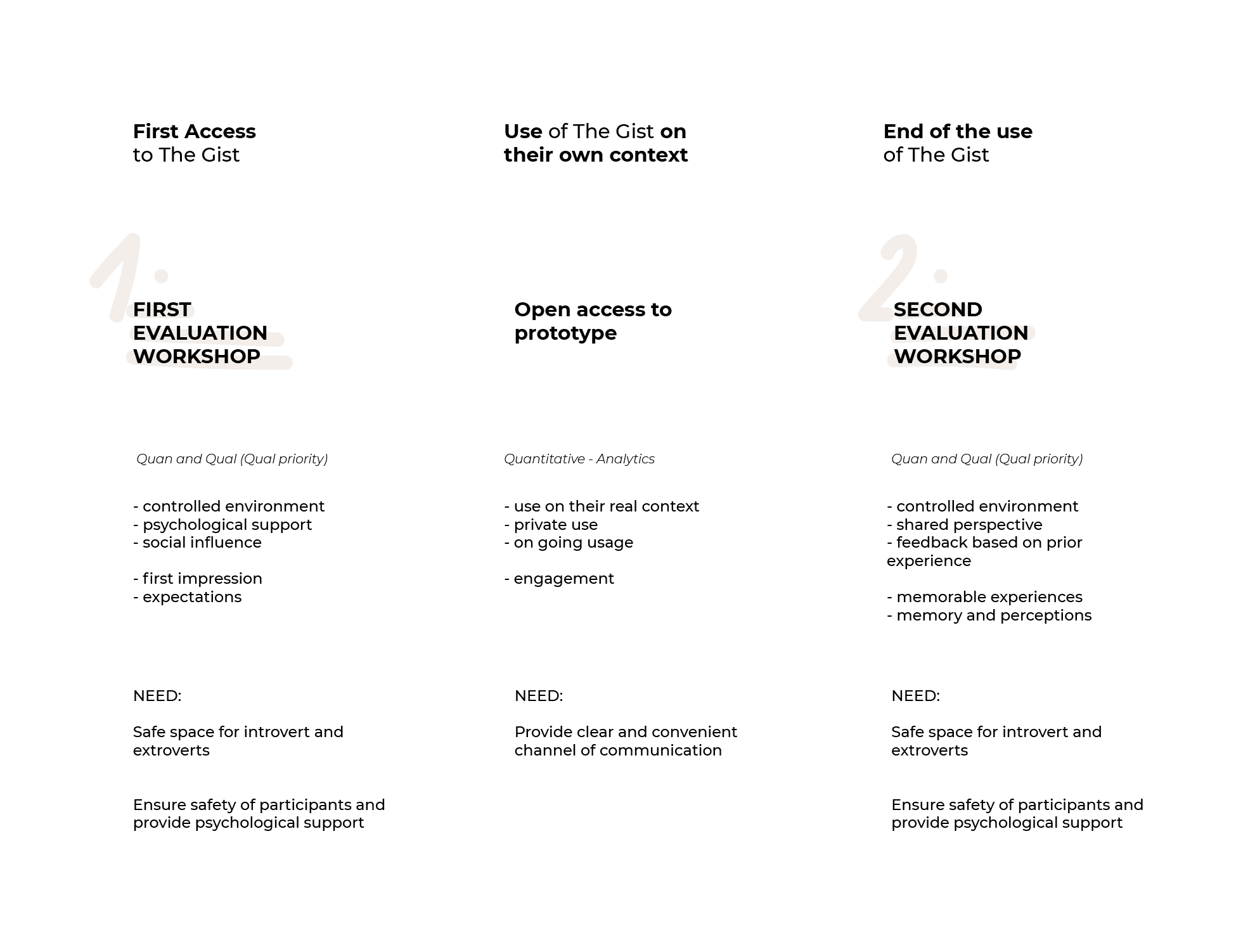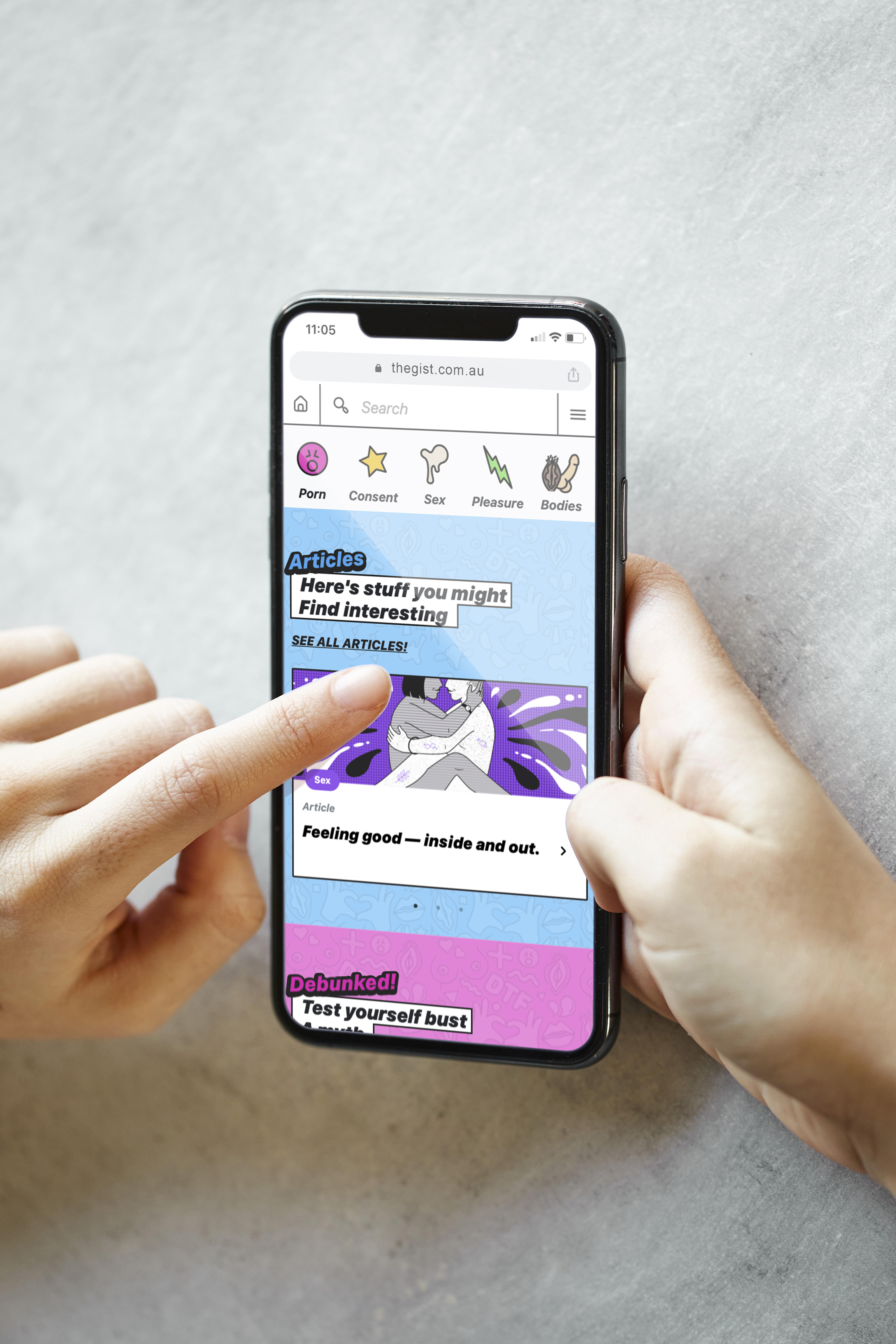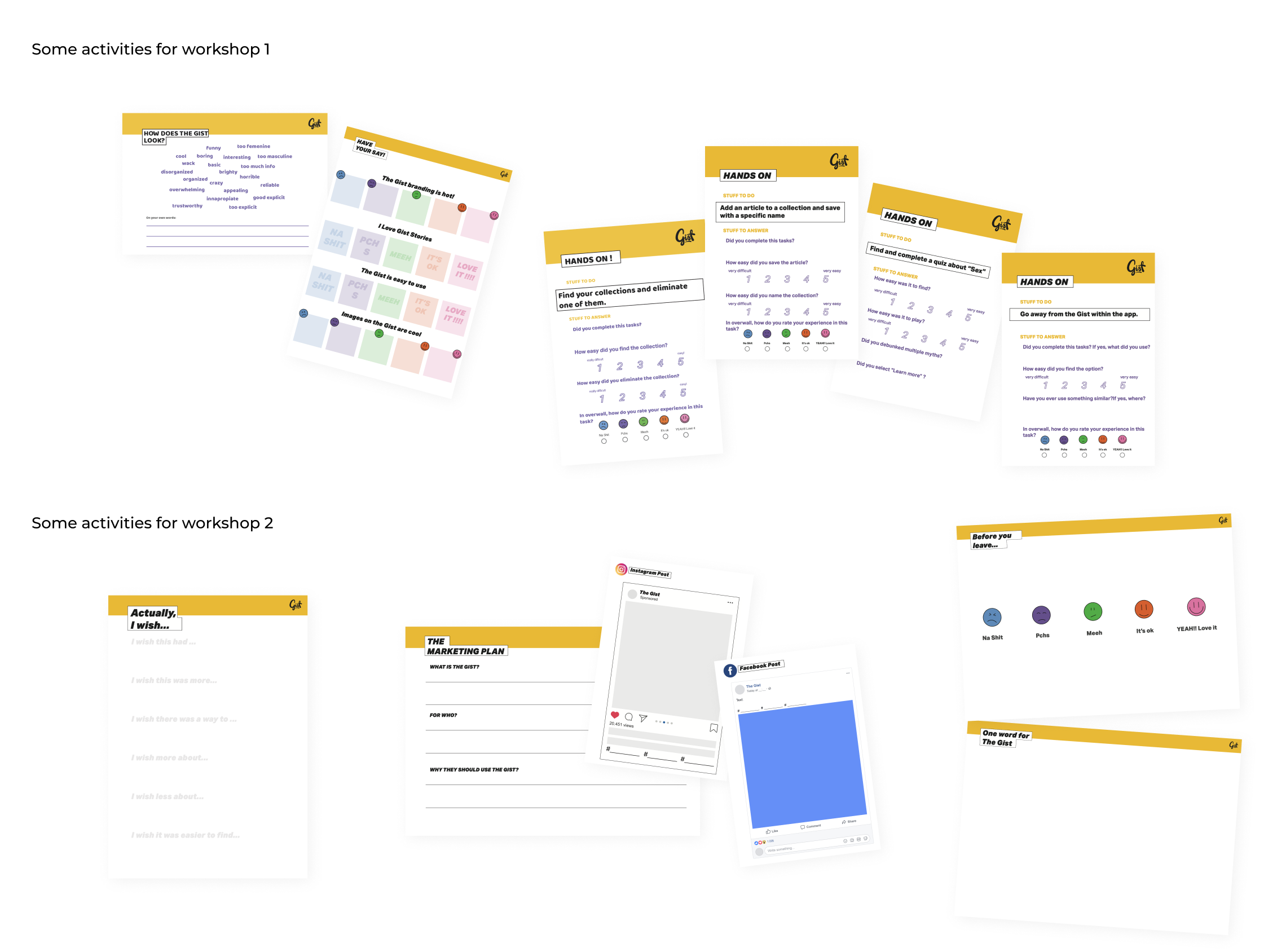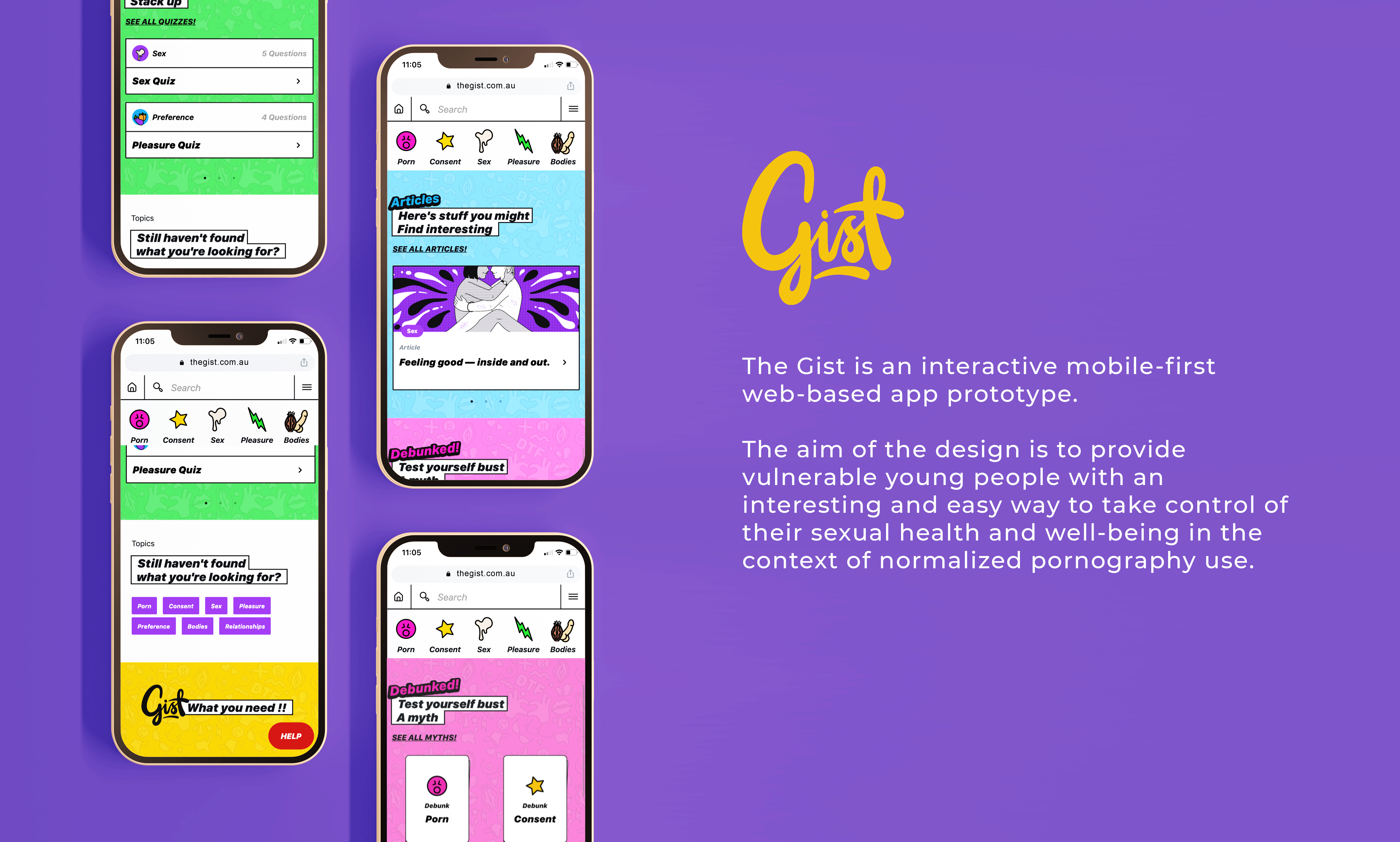Lorem ipsum dolor amet, consect adipiscing elit, diam nonummy.
Co-designing a digital health resource with vulnerable young people to enhance sexual health literacy, my role in this project was being the UX Designer & Researcher taking part in the last stage of the project: Prototyping and Evaluation & Testing.
My role in this project was UX Designer and Researcher, replacing the designer who carried out the majority of the project. However, I was able to contribute to this project as the principal designer and researcher in the last stage of the project: Prototyping and Evaluation & Testing.
We were a multidisciplinary team including other designers, academic researchers and evaluators, developers, illustrator and copywriter among others, of which I was proudly part of.
The impact of viewing pornography at a young age on the sexual health of subgroups of young people is an important public health issue.*
Porn teaches us an unhealthy and unrealistic idea of how sex, relationships and consent work.
Research shows… 87% of young men and 57% of young women watch porn at least weekly.**
Young people are not getting information about sex, relationships & porn that they need or want***

To Co-design a digital resource with vulnerable young people to enhance their relationships, sexual health
and porn literacy.
Young people aged 14-16 who are engaged in services such as youth services, alternative education or public housing, and from a diverse background
(gender & sexual identity, fragmented education, experiences of family conflict and trauma, CALD backgrounds)

![]()
Generative Research with your people.
Desk Research.
![]()
Define workshops with young people.
![]()
Ideation workshops with young people.
![]()
UX Design
Content Strategy
![]()
Evaluation workshop with young people.

My focus
As I have already mentioned, I arrived at this project almost in the last stage: Test & Evaluation. However, I also contributed to the content strategy and coordinating content, development, design and visual assets (illustrations), but my tasks as a principal UX Designer and Researcher were especially on the Testing and Evaluation stage, so it’s where I’m going to focus on.
If you want to see the whole process, I highly recommend you to read this awesome academic paper about this project:
![]()
Making sure we meet young people’s expectations and needs
After several months of works, we had already a fully developed prototype, ready to be taken to young people and get their voice heard.
I started planning and designing the activities that would allow young people to express what they thought about the product in an engaging way. I started, of course, with the objectives.
The objectives for the evaluation phase where:
– Test the usability, accessibility, desirability and relevance among our target audience.
– Assess the inclusion of diverse backgrounds and their safety when using the product.
– Collect insights for future scale up and marketing campaigns.
A total of
33 young people
were involved in the Evaluation stage, within 3 groups. Some of them were part of the previous phases of the process but the majority of them were new to the project.
2 evaluation workshops,
and free exploration in between.
We designed the evaluation stage as a journey of two different workshops, where young people would have access to The Gist in between them, so they could use it in a more realistic context and in a private environment.

Does The Gist influence knowledge, attitudes and confidence related to respectful and healthy relationships and sexual health and wellbeing literacy?
Is The Gist acceptable, desirable, usable and accessible?
Trauma-informed practice
We were aware of the potential hams of participants with experiences of trauma and their engagement with exposure to The Gist. We applied best practice and put the resources that were necessary to ensure the safety of our participants.
We also went through an ethic committee to accept our approach, assets, plans and guides.
However, this process didn’t ensure the no-risk of the exposure to The Gist, however, it allowed us to plan ahead to prevent and support in the best way possible to young people.
Relevant and practical information.
We wanted The Gist to provide practical and clear information that young people are not getting from their context, whether is through porn, society or education.
Thus, we had to evaluate that the content provided was meeting the needs and expectations of young people but also, that it didn’t expose them to any harm or stress related with the content.
Another consideration was the inclusion of the language we use and the cases we present, so the content was presented in gender- and sexuality-neutral ways to enable young people to explore information in an inclusive environment. We also had the question of whether this was an appropriate way to communicate or should we specify all genders more explicity.
Quality prototype to allow full engagement.
The prototype developed was fully functional, web-based and mobile-first.
It contains a diverse type of content, such as videos, quizzes, Instagram style stories, text and illustrations.
The quality of the prototype allow young people to fully explore the prototype, not just during the sessions, but also at their own, allowing us to collect also quantitative information to complement with our findings during the evaluation workshops.

Making their voice heard.
For a higher engagement, the activities from a normal usability test were converted into more engaging and dynamic activities. I also designed activities that allowed young people to express their opinion verbally and also through some more visual elements, such as creating marketing campaigns or youtube video talking about The Gist.
A variety of activities were designed to ensure that the workshops were inviting participants to share their opinion.
Building trust and connection was also an important consideration for these workshops, since more valuable insights are always generated in safe and inclusive places.

“…get info about things that are not typically spoken about”
Some of the strengths that we found through evaluation were:
– Engaging interactive features (Quizzes, story-style content, myth-game)
– Clear and easy to read information
– Inclusive and safe for gender and sexuality diverse young people
– Appealing and accessible design
– Valuable information about “taboo” topics.

⊙ Making sure the development of the prototype was made according to the design requirements.
⊙ Ensure the UX for the prototype, balancing the development resources and the user needs and preferences.
⊙ Support the content strategy and structure.
⊙ Designing co-creation sessions for the Evaluation stage.
⊙ Designing Usability test in collaborative and dynamic sessions.
⊙ Create the assets and dynamics for the Co-creation Evaluation Session.
Sketch, InVision, Adobe Creative Suite, Google Cloud,